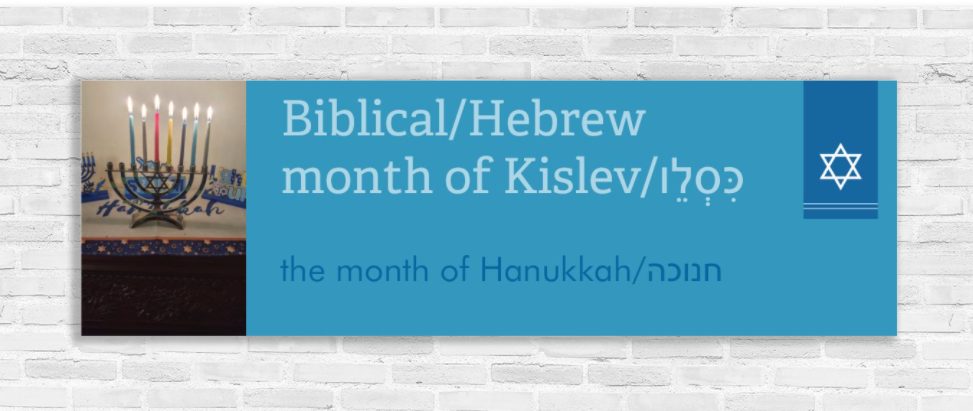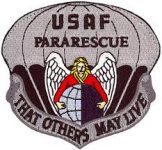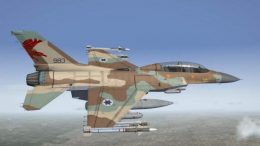Book Review:
The Temple: Its Ministry and Services
Alfred Edersheim’s The Temple: Its Ministry and Services is a brief, limited expository of the history of a Jewish religious institution and its services, and how it relates to Christianity, even to this day. This would include Messianics also.
Edersheim relates, in the Preface, that he is “chiefly dependent” (ix-x) on the Old Testament and the Mishnah as his sources for this book. Yet he does not neglect to mention Josephus, Philo, the New Testament, Maimonides, writers of Biblical Antiquity, encyclopedias, commentaries, treatises, and etc., along with “recent explorers” (x) of the city of Jerusalem (in his time Robinson and Barclay). He differs with some of these sources occasionally, which is noted.
This book’s author was born in 1825 in Vienna to Jewish parents and converted to Christianity as a young man. A veteran minister and missionary to the Jews of Romania, he studied theology at Edinburgh and Berlin, and he was one of the leading authorities of his time regarding the doctrines and the practices of Judaism prior to and during the early Christian era (back cover). This book was originally written before 1876.
The purpose of this book is best explained by Edersheim in his Preface, “. . . to take the reader back nineteen centuries; to show him Jerusalem as it was; . . . and chiefly, to sketch, in one important aspect, the religious life of the period in which Our blessed [Master] lived upon earth, the circumstances under which He taught, and the religious rites by which He was surrounded; and whose meaning, in their truest sense, He came to fulfill” (vii).
The audience to which Edersheim is writing to is both Bible-students and general Christian readers. It is to help show them the importance of the Temple and its rituals. Not all readers will be interested in all areas he covers in the book. Edersheim states, “I have thus placed the permanent Christian interest in the foreground, because it occupied that place in my own mind” (viii). Writing this book strengthened his faith.
The book begins with an explanation of what you would have witnessed viewing Jerusalem at the time of the Messiah, as well as a brief history of the city’s development. It covers the walls, gates, towers, hills (mounts) it is built on, prominent city structures, and the Temple. This gives you a mind’s eye view of the glory and layout of the city. He does not end there though. He next transports you to how current Rabbis have drawn up fables to explain the Jerusalem of the past and then the ruins the city was in during his time. Several Psalms are referenced and Acts 21:31 is referenced concerning the Tower of Antonia.
From here we are now shown the Temple proper. Starting with the bridge and entrances into the Temple. In his descriptions you get a feel of the immensity of these structures, such as a single stone being 24 feet long and pillars being 37½, 50, and 100 feet high. Solomon’s Porch, where Yahoshua walked is explained. The Court of the Gentiles is referenced as having been 750 feet square and as the place where Yahoshua overturned the tables of money changers. Non-Jews were not to enter past the Court of the Gentiles. The gates are mentioned with the most magnificent gate being the ninth gate made of brass. It is described as the place the lame and beggars were brought. In the Court of the Women, no woman was to go past that point and it is said to have been about 200 feet square. This is where the Temple ‘trumpets’ (chests of money) were located, up to 13 of them. Mt. 6:2 is theorized to not apply to musical trumpets, but rather to people carrying these alms chests (trumpets) in front of them for show. This Court and all succeeding Courts sat inside the previous Courts, thus making a layered system. Next, the Court of Israel, divided in half by an 18” balustrade, is described with all of its chambers. One of these chambers was the “’Gazith,’ or Hall of Hewn Stones, where the Sanhedrin was wont to meet” (28). The Sanhedrin, which was a religious judicial body, has recently been re-established in Israel. Fifty of the 70 members ascended the Temple mount, during the beginning of Chanukkah 2004. Some believe this is necessary for the Return of the Messiah. There is another mention of the Temple’s immensity as the Holy House “was built of immense foundations of solid blocks of white marble covered with gold, each block measuring, according to Josephus, 67½ by 9 feet” (33).
The Altar, the Laver and the Veil are then described with the altar being the one for the offerings other than incense, which had its own altar. The altar dimensions are said to have been 48 X 48 feet square at the base, 15 feet tall, and 36 X 36 feet square on top, where 3 different fires burned. In discussing the laver, it is interesting that the machinery used to fill the laver, supported by 12 huge lions, was quite complex. Also interesting are the aqueducts feeding the laver, being 40 miles worth from 3 sources. In the laver itself “twelve priests could wash at the same time” (32). When talking about the veil, a description of the veil itself is missing. The entrance to the Holy Place and what resides in it is clearly visualized. However, all that is said of the veil is that it hung in the doorway separating the Holy Place from the Most Holy Place. It was this veil that was rent in two when Yahoshua hung on the cross. Ending the chapter is the Messiah’s prediction of the destruction of the Temple and Jerusalem.
In chapter 3, we find coverage of the Temple discipline, money, and music. The Urim and Thummin are mentioned as missing in Edersheim’s time. These were used in the Old Testament to determine guilty parties and Elohiym’s selections. They were worn by the High Priest. The rules of the Rabbis are noted as some being practical, while others not so easily explained. There were certain directions to walk in and out of the Temple, what footwear (if any) was acceptable, and many more rules. Edersheim here takes time to point out the penalties for violations and for willful profanity. Paul is mentioned in regard to receiving the scourge, a 3-thonged whip, as punishment. Edersheim agrees with the need for strict discipline in the Temple because of the multiple of people. Explained next is the Temple treasury, how the money was collected, and how it was spent. The tribute money was now enforced by law at Yahoshua’s time, yet seems to not have been this way from the beginning. The Temple treasury still accumulated greatly, despite paying for public sacrifices, necessities, repairs, fees, salaries, repairs for city walls, roads, and public buildings.
Music and singing were part of the regular Temple service, with at least one Psalm being sung every day. I cannot agree with the book on “the real service of praise in the Temple was only with the voice” (50). It indicates that the instruments were just for accompaniment of the voice. However, I see too many instruments being used for them to only be used with the singers. It even mentions that “the Rabbis enumerate thirty six different instruments, . . .” (51). Edersheim says there are only 15 mentioned in the Bible; nevertheless, I easily found 20 by English names, which break up into 24 different named instruments in Hebrew. The Tanach establishes 6 more as musical instruments in the Psalms footnotes (1440-1512), that are seen by Strong’s as only musical notations, names, rambling poem, or laudatory. That is thirty so far, and I may have missed some in my research. The Rabbis thirty six is quite probable. Edersheim states “only one pair of brass cymbals were allowed to be used” (51). As to the accuracy of this, I am unsure because the Bible does mention two types of cymbals, the m’tzeleth (double cymbal) and the tz’latzal. The latter seems to be a single cymbal similar to a gong. Besides the cymbals, only the harp (kinnor), lute (nevel) (listed as viol or psaltery in KJV), silver trumpets, Shofar, horn, and flute are mentioned. This is a shame that more of the instruments were not listed.
Before the discussion of the sacrifices begins, those of the priesthood, who performed the sacrifices, are described. Included are their symbolism, number, required holiness, duties, training, disqualifications, vestments, and support. Noted are the 13 officers, besides the High Priest and their duties, and the lower officials. “Yet it has all vanished, not leaving behind it in the synagogue even a single trace of its complicated and perfect arrangements. These ‘old things are passed away,’ [2 Cr. 5:17] because they were only ‘a shadow of good things to come.’ [Heb. 10:1] But ‘the substance is of [Messiah],’ and ‘He abideth an High-Priest for ever’” (73). Sacrifices, of course, were one of the priests’ main duties.
Hence, we now find the sacrifices described. First by their order and meaning, with a description of how the blood was applied, the flaying done and salt applied, and the burning of the sacrifice. Of interest in this section is Edersheim’s insertion, explaining that the New Testament view of sacrifices agrees with the ancient synagogue and how the Jewish liturgies fit into the previous sacrifices.
As the foundation of the order and meaning have been laid, the offerings (Burnt-, Sin-, Trespass-, Peace-, Meat-, and Drink-) are now explained in detail. In each can be found Messiah and the New Testament blended into the explanations. I dislike the word ‘meat-offering’ because it does not apply to meat at all. The term comes from the KJV, which is the wrong term to realize the true meaning. The Hebrew word is Minchah. It refers to offerings of grain, either as whole grain, bread, or flour. It can be wheat (the most used), corn, barley, or any other grain. The more appropriate term is grain-offering as used in Strong’s or meal-offering as used in newer Bible versions. “Blessed be [YaHVaH], the reality in [Messiah Yahoshua] is this, as in all other things, far out-distances the type!” (103).
New Testament allusions, to the Temple, are said to be seen in the writings of John, both the Book of John and Revelation. Going off of Rv. 16:15, Edersheim goes on to describe the Temple activities at night. A night service, changing of the priests, Temple accounting, night-watches of the guards, Captain of the guards’ rounds, and the casting of the lots are all briefly mentioned. The second lot was for the morning sacrifice, which took numerous priests to perform.
The chapter on Morning & Evening sacrifices begins with a discussion of Public prayer, liturgical formulas, The Disciple’s Prayer, and attitudes and elements of prayer. Neglected in the previous chapter, but mentioned here is the filling of the laver by the first priest of the first lot so they could all wash their hands and feet. An allusional comparison is given to john 13:19 in the washing of the disciples’ feet. Altar prepared, second lot cast, lamb slain, altar of incense & candlestick prepared, and sacrifice salted & burned, are all done in that order. It is now time for the prayer of the 3rd lot and the reciting of the ‘Shema’. The 3rd lot is the burning of the incense on the incense altar, which needed 3 priests. The imagery of Rv. 5:8 and Rv. 8:3-4 is related here. Prayers were offered by both the priests and the people during this time. The priestly blessing was given after the prayer. The temple music was last according to the book. The Sabbath song is Psalm 92.
In discussing the Sabbath, Edersheim well writes of the perversion of the Sabbath by the Rabbis (and the like) at the time of the Messiah. His explanations of the strictly kept Sabbatical year, at the time of Yahoshua, is that in effect the essence was nullified by papers, excluding the release from debt. The Sabbath was to be a time of joy and rest. It was not to be rules & rules & rules, which is why Yahoshua stated in Mk. 2:27, “The Sabbath was made for man, and not man for the Sabbath,” KJV.
The Hebrew calendar and dates of the Festivals follows. Its difficulties, names of the months, and charts are included. The festivals covered individually in the next chapters are: Passover; Paschal Feast and the Master’s Supper; the Feast of Unleavened Bread and the Day of Pentecost; Feast of Tabernacles; New Moons: The Feast of the 7th New Moon, or of Trumpets, or New Year’s Day; and Day of Atonement. All are in the Old Testament.
The Passover is seen as probably the most important. The modern ceremonies differ from New Testament times, as did the Temple services from the first Passover. Important is the singing of the Hallel (Ps. 113-188) on Passover and 17 other festive days and the Great Hallel (Ps. 120-136) on very rare occasions. The book points out that when Yahoshua instituted the Master’s Supper it was not done at the original breaking of bread and wine, but rather during the 3rd cup of wine, the cup of blessing. The wine was of utmost importance. Everyone, including the poor, was to have four cups of wine. These four cups totaled one hin (about 1¼ gallons) of wine. The Feast of Unleavened Bread began right after the Passover meal. No one was to have leaven for seven days as a reminder of the redemption from Egypt. The first day (or night to be exact) was when the Master was betrayed and arrested. “And so the strangest contradiction was enacted. They [scribes and Pharisees] who had not hesitated to break every law of [YaHVaH] and their own making, would not enter the Praetorium, lest they be defiled . . .” (202). During this Feast, Yahoshua was beaten, crucified, and rose again.
The Feast of Tabernacles was considered the most joyous, as it occurred at a time when people were naturally joyful. It is in the 7th month, Tishri (September/October), and consist of living in open booths and special celebration. The two most important ceremonies were of post-Mosaic origin (227). The text goes over the references in Jn. 7:37. There were also special celebrations to be done on the New Moon (1st day of every month), especially that of the 7th month. In Scripture it is called Yom T’ru’ah (Day of Trumpets). It is sometimes referred to as the Feast of Trumpets and nowadays as New Year’s Day. The trumpets were blown all day long. “The Mishnah . . .” relates that there are four New Year’s, “. . . the first, beginning with the 1st of Nisan [Abiyb] . . . for computing the feasts [sacred year]; the second, on the 1st of Elul (the 6th month), for tithing flocks and herds . . . the third, on the 1st of Tishri (7th month), for the Civil, the Sabbatical, and the Jubilee year, also for trees and herbs; and lastly, that on the 1st of [Shevat] (the 11th month), for all fruits of trees” (235). If the other Feasts are of joy, then the Day of Atonement is a declination from joy to fasting, a Sabbath of the Sabbathism. It also occurs in the 7th month and is a day of repentance, reconciliation to YaHVaH, and fasting. Special dress is worn by all. Only the High Priest officiates and the scapegoat is released. On this day the High Priest goes into the Most Holy Place once a year.
From the required Feasts we come to the post-Mosaic Festivals and Fasts. The Feast of Purim, starting with the Fast of Esther, was instituted for the deliverance of the Jews by Esther. Interestingly, an article I read recently said that if you identify with the Jews need for deliverance, then you should fast on this day for them, just as Esther had done. The Feast of Chanukkah was for the rededication of the Temple in 165 BCE after forced worship of Greek gods for 3 years. The Feast of Wood-offering is not well defined in the book and not on any calendars I have. The other Fasts, besides Yom Kippur (Day of Atonement) and the Fast of Esther, were the 17th of Tammuz, 9th of Av, 2nd of Tishri, and 10th of Teveth. The current Jewish calendar contains another 22 fast days, according to the book. “But that is not all. It was customary to fast twice a week (Lk. 18:12), between the Paschal week and Pentecost, and between the Feast of Tabernacles and that of the Dedication of the Temple [Chanukkah]” (272).
As with fasts, Purifications were to cleanse one of the sin of adultery, cleanse one from defilement by the dead, cleanse a mother of a new born child, and cleanse a leper of leprosy, so as to bring that person back into purity and right standing before YaHVaH. Of these the purification of defilement of the dead was the most solemn and required considerable preparation. Both the priest and the unclean person had to prepare themselves for seven days. At the end of these seven days, a Red Heifer without spot or blemish was to be used and sacrificed outside the city. After the sacrifice was wholly burnt, the ashes were put in a cup given to a special child, raised from birth for this ministry. The child then pushed the cup against a stick on a goat until sufficient ashes were spilled. The ashes were then put in water which was then sprinkled on the unclean. The child performed this sprinkling with 3 separate stalks of hyssop tied together. Very elaborate.
The vows of an individual are now mentioned. Explained in detail are the Nazarite vow, the offering of the firstfruits, and the song of ascent.
In the concluding Appendix of the book, Edersheim reaffirms his belief that the Master’s Supper was instituted on the Paschal (Passover) Night. He debates the objections of Dr. Farrar, who believes the Master’s Supper occurred the night before that. He seeks to find out if the account in John is in opposition to the Synoptic Gospels. Edersheim determines that it is not in opposition and that Dr. Farrar is mistaken.
Although a well written book, it comes with some exclusions which are the lack of a list of the referenced material and some incomplete explanations. The main difficulties, or rather detractors, from the book I blame on the publishers, Hendrickson. First is the using of the NIV Scriptures, instead of the KJV, in the sidelines. Second is the use of black-and-white pictures instead of color.
Edersheim’s book covers all aspects of the Temple sufficiently for the Believer to get a feel for the time Yahoshua HaMashiyach was here on earth and the atmosphere surrounding Him.
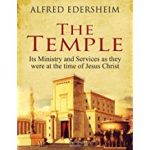
First published 2005, © 2005, 2017
The Temple
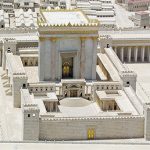
Return to Table of Contents
Or continue on to What is the Rapture?
